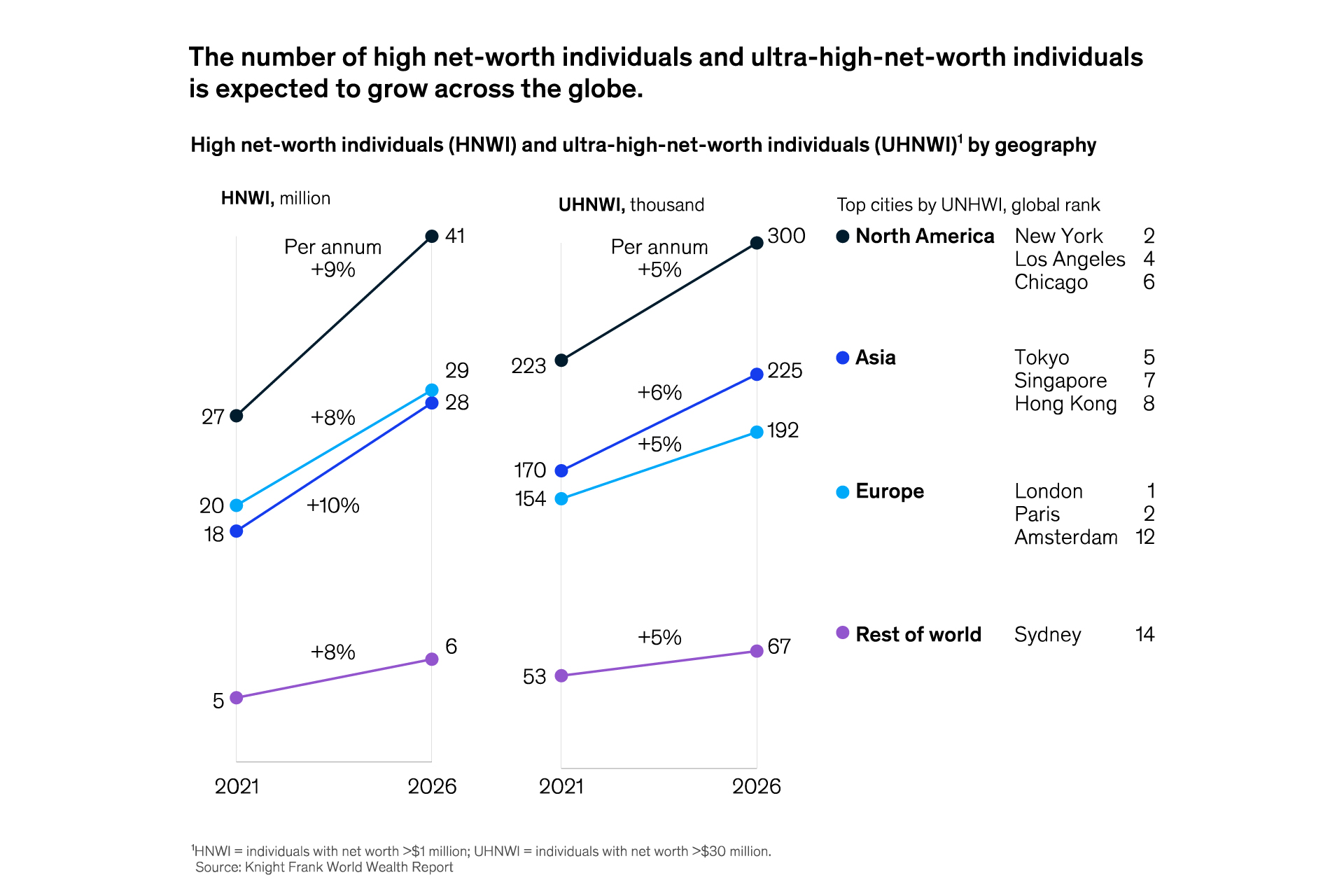Reshaping Luxury Cars at the Intersection of Art and Technology

High-net-worth (HNW) and ultra-high-net-worth (UHNW) individuals from every generation have one thing in common. They regard owning a luxury car as a symbol of wealth and class. After all, pulling up at a party or corporate event in a stylish luxury car is often considered a testament to social affluence!
However, the current generation of UHNW and HNW segments looks beyond tradition and craftsmanship. For them, luxury is no longer just about appearance. It has found a new definition. Luxury is where art and technology blend to create unprecedented innovation and personalised driving experiences beyond simple, connected car technologies. This generation is also more socially and environmentally aware and values sustainability more. The growing popularity of alternative drive trains viz: all-electric (BEV) / Hybrid luxury cars is a sign of this changing mindset. And with the increasing number of HNWI and UHNWI populations in the coming years, it’s time to consider these market trends.

Source: The forecasted increase in HNWI and UHNWI population by 2026
The Evolving Landscape of Luxury Cars
The UK luxury car industry is also experiencing the major effects of these global trends. With the advancements in battery technology, many UK-based luxury car owners are moving from classic V8 engine-powered to smart technology-enabled hybrid models. This mindset shift in buyer demographics continues to push many niche luxury automobile brands to take note and focus on “tech-infused” luxury. This term describes the increasing integration of advanced technology into high-end vehicles.
All of the leading luxury car manufacturers have already embraced this new trend. Rolls-Royce has publicly announced its vision for the next 100 years of luxury cars. According to a recent report, Jaguar Land Rover (JLR) has started investing significantly in autonomous, AI, and digital technologies to realise its vision of “modern luxury.” The leading luxury car brand has also invested in cutting‑edge battery intelligence software to address range anxiety around EVs. The software is expected to improve luxury electric vehicles' battery life and performance.
Technological integrations aside, Porsche is making significant strides on the sustainability front. Early this year, the company revealed its new partner for low-carbon aluminum vehicle components. Porsche is also testing three powertrains for its future Cayenne models.
The underlying motif of these reports unanimously dictates that AI, electric powertrains, and autonomous driving will transform cars into personalised, sustainable, intelligent spaces. Interestingly, the Ministry of Transport (MOT) is taking note of different technological advancements in the luxury car segment to amend its annual inspection regime.
Redefining the Driving Experience of the Future
So, what does the tech-infused luxury look like? We can already see an increased preference for AI-driven autopilot systems to make driving a safer and more personalised experience with adaptive settings. ADAS systems with adaptive cruise control, stop-and-go, lane centering, and automated parking are also becoming a staple in many luxury cars. Many manufacturers are developing cars that require minimal human intervention on motorways and can soon navigate busy city streets. JLR has already started working on AR head-up displays to provide essential information to drivers back in 2020. With the recent acquisition of Mechdyne, an innovative AR software company, the car brand signals its continued investment in AR technology for future luxury cars.
But this is just the surface. There’s more to the tech-infused luxury cars, especially with the convergence of electrification, autonomy, and advanced human-machine interfaces.
Expectations from Future Luxury Cars
- Smart electric-vehicle dimensions: Cutting-edge advanced driver-assistance system technology.
Level 4 autonomous-driving features are available and 100% safe to use - Over-the-air enabled post-purchase upgrades: Use of drivers’ favorite car apps, with updates and new features that are added over the air.
- Human-machine interface integration with the local app ecosystem:Country-specific notification services, integration of content from 3rd-party apps, and entertainment for passengers
- Customer experience-intuitive user interface with intuitive and driver-centric designSeamless interaction with the vehicle and a personalised user experience along the journey
Smarter Technology = Advanced Personalisation
Technological advancements are also opening new creative doors to vehicle personalisation, both in the aesthetic and functional sense.
We can soon witness a new era of hyper-personalised driving experiences with rapid progress in natural language processing, biometrics, and GenAI. That day isn’t far when we will see luxury cars that can anticipate driver-specific needs to adjust seat positions, optimise routes in real-time based on traffic and weather, or even curate music playlists. These cars’ in-built climate control can adjust cabin ambiance based on biofeedback. The car's performance can be further fine-tuned to the driver’s driving style. Thanks to advanced software and manufacturing techniques, luxury brands can offer unparalleled customisation levels.
A Tech-Boost to Traditional Craftsmanship
Combining art and technology has catalysed a revolution in artistic expression across every field. The luxury car segment is no different. Car designers and stylists can use advanced AI models to quickly simulate various complex shapes, intricate details of car styles, appearances, and their aerodynamic and ergonomic design. This will help them speed up the production of innovative and stunning luxury cars without compromising aesthetics.
In addition to technology-augmented designs, the move to hybrids and BEVs has created more room for experimentation. With the absence of traditional engine compartments, luxury car designers now have greater freedom to create spacious and versatile cabin layouts.
Among the top players, Maserati stands out for its unique vehicle personalisation efforts. Early this year, Maserati has recently announced its plans to create the "Atelier of the Fuoriserie Personalisation Program" at the Modena facility. The personalisation program is dedicated to producing custom Maserati models and ensuring that their cars have the most eye-catching design and unique elements.
Preparing for the Digital-First Generation
The future of luxury automobiles is more than imbuing cars with technological advancements. It will be more about crafting a responsible yet holistic experience that resonates with the desires and aspirations of a high-profile clientele. The implications of this shift are profound for industry leaders.
CXOs must accelerate investments in AI, machine learning, and cybersecurity to ensure a competitive edge. CIOs should prioritise data-driven insights and cloud infrastructure to support the growing complexity of connected vehicles. CDOs are tasked with crafting compelling brand narratives that resonate with tech-savvy luxury consumers. On the business front, VPs of Sales must adapt to a more consultative sales model, emphasising personalised experiences and after-sales services, e.g., they must infuse AR/VR technologies to offer potential customers an immersive buying experience. Marketing leaders should focus on creating immersive brand experiences that leverage digital channels and storytelling.
The Need for a Hybrid Architecture: Efficient Traditional and Disruptive Digital Approaches
Unlike enterprises that are born digital, traditional luxury car manufacturers don’t have the advantage of building their tech stack from the ground up. Thus, these traditional automakers must build an operational architecture designed for the digital age.
This new operational architecture will be critical to unlocking a two-speed approach to success and agility. A two-speed architecture can nurture a heterogeneous environment combining a slow-speed, transaction-focused legacy back-end and a modular, digital-first, customer-centric front-end. The modular front end can help shorten deployment cycles through microservice-based features, reducing the time to market for many new features and functionalities. These features can not only delight potential customers but also improve the employee experience. On the other hand, a stable and high-performing transactional core system of records (SoR) can support legacy systems and manage longer product development and deployment cycles.
But the road is not without a few speed breakers. Ensuring cybersecurity, addressing ethical implications of autonomous decision-making, and overcoming public acceptance of self-driving cars remain critical hurdles. We must also find solutions to ethical issues concerning AI, such as algorithmic bias and job displacement.
The way forward is to embrace innovation, foster collaboration between design, technology, and business, and anticipate HNWI and UHNWI consumers' evolving needs so the industry can solidify its position at the forefront of human ingenuity and luxury.
References:
1. Guan, M., Kostring, J., Middleton, S., & Timo, M. (2022). “Five trends shaping tomorrow’s luxury-car market.” McKinsey. . https://www.mckinsey.com/industries/automotive-and-assembly/our-insights/five-trends-shaping-tomorrows-luxury-car-market
2. Rolls Royce 103EX.. https://www.rolls-roycemotorcars.com/en_US/inspiring-greatness/vision/103ex.html
3. 2023. JLR to invest £15 billion over next five years as its modern luxury electric-first future accelerates. Jaguar Media Center. https://media.jaguar.com/news/2023/04/jlr-invest-ps15-billion-over-next-five-years-its-modern-luxury-electric-first-future
4. 2024. JLR signs deal with Fortescue for advanced EV battery intelligence technologies in luxury vehicles. Jaguar Media Center. https://media.jaguarlandrover.com/news/2024/05/jlr-signs-deal-fortescue-advanced-ev-battery-intelligence-technologies-luxury-vehicles
5. Charkaborty, S. (2024) Next-gen Porsche cars to flaunt Hydro REDUXA low-carbon aluminum. https://www.alcircle.com/news/porsche-accelerates-sustainability-goals-with-hydro-s-low-carbon-aluminium-partnership-111394
6. 2024. Porsche plans a trio of powertrains for the Cayenne into the next decade. AI Circle. Porsche Newsroom. https://newsroom.porsche.com/en/2024/products/porsche-cayenne-drivetrain-product-strategy-36924.html
7. Rana, K. & Khatri. N. (2024). Automotive intelligence: Unleashing the potential of AI beyond advanced driver assisting system, a comprehensive review. Science Direct. https://www.sciencedirect.com/science/article/pii/S0045790624001654
8. 2019. Jaguar Land Rover develops an immersive 3D in-car experience with head-up display research. Jaguar Media Center. https://media.jaguarlandrover.com/news/2019/08/jaguar-land-rover-develops-immersive-3d-car-experience-head-display-research
9. 2024. Maserati confirms commitment to 100% Engineered and Made in Italy strategic plan, focused on bold electrification and sustainable growth. https://www.maserati.com/in/en/news/maserati-electrification-and-sustainable-growth

Sachin has over 25 years of global experience in core automotive luxury OEM, business, and technology consulting. He holds an engineering degree, an MBA in marketing, and a postgraduate diploma in digital business.








